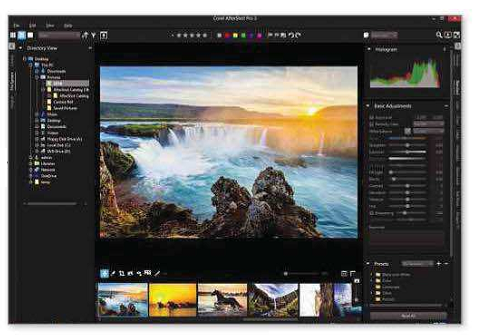Corel AfterShot Pro 3 Review: Flagging photo fixer

Corel AfterShot Pro 3 – Professional users approach photo editing in two ways, epitomised by Adobe’s Photoshop and Lightroom programs. Photoshop is used across all kinds of work and provides a full set of tools to manipulate images at a pixel level. Lightroom is the choice of photographers who need to flip quickly through hundreds of shots at a time, rate them, tweak the best to look perfect, and maintain a catalogue of pictures tagged so they can easily be found again. AfterShot Pro is Corel’s lower-cost rival to the latter.

The two key functions of a photo manager are library access and raw editing. DSLRs and other reasonably
SYSTEM REQUIREMENTS
Windows 7, 8 or 10 (64 bit only) or mac OS 10.9 or later; also supports 64bit Linux • 2GB memory • 400MB hard-drive space • Internet connection for optional help and updates
serious cameras (now including some phones) can store raw images, without pre-processing them into colour-corrected JPEGs. This lets you adjust them extensively in software without losing quality. AfterShot combines these functions into a single screen, which works snappily but feels daunting. As with Lightroom, the methods of sorting and filtering the library are powerful, but confusing at first. The Perfectly Clear option is a nice one-click fix, but some of the manual tools feel clumsy, and we found lots of recent cameras missing from raw support, making the program useless to their owners. Lens profiles also need updating.
At the time of writing, AfterShot Pro 3 with a free ParticleShop plugin, using technology from Corel’s advanced Painter software – a strange choice, but interesting. It still wouldn’t tempt us to invest in this program until it’s properly overhauled.
VERDICT:
Although AfterShot Pro is soundly designed, it doesn’t seem to have had enough attention from Corel in recent years.





